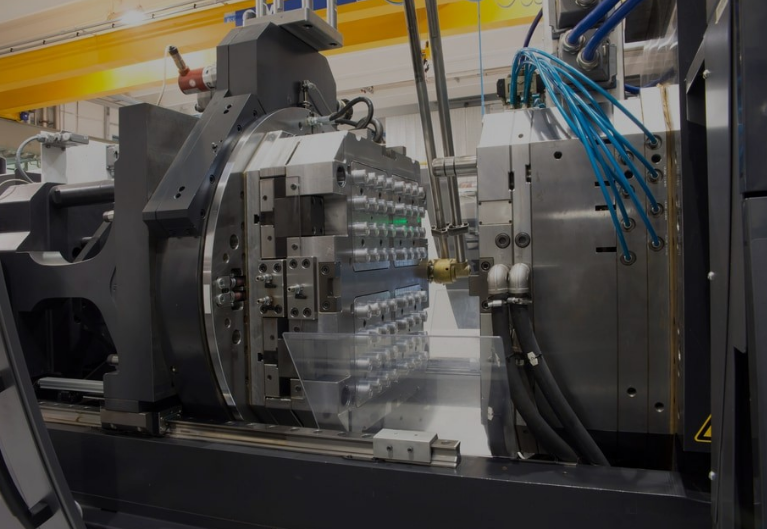Injection molding is unsuitable for large products due to machine size limits, increased costs, and technical challenges in maintaining product quality.
Size Limitations in Injection Molding
Physical Constraints of Injection Molding Machines
Injection molding machines are limited in the size of products they can produce due to their design and operational capabilities.

Maximum Clamping Force: Typically ranges from 100 to 5000 tons. Machines capable of higher clamping forces are significantly more expensive and less common.
Platen Size Limitation: Standard platen sizes usually don’t exceed 2 meters in width and height, directly limiting mold and product size.
Injection Capacity: The maximum shot volume is generally around 6000 cubic centimeters. Larger volumes require specialized machines, increasing production costs.
Challenges in Scaling Up Mold Size
Increasing the size of the mold in injection molding introduces several significant challenges.
Increased Material Volume and Cost: For larger molds, material volume can exceed several kilograms per shot, increasing raw material costs substantially.
Uniformity Issues: Ensuring uniform wall thickness in larger parts is challenging, often leading to quality issues or increased cycle times.
Mold Manufacturing Complexity: Manufacturing large molds can be exponentially more complex and expensive, often requiring specialized machinery and handling equipment.
For additional information on injection molding specifications and limitations, you can visit the Wikipedia page on Injection Molding.
Material and Structural Concerns in Injection Molding
Issues with Material Cooling and Curing
Effective cooling and curing are crucial in injection molding, especially for large products.
Extended Cooling Time: Larger products require longer cooling times, which can significantly extend the overall cycle time. For a large item, cooling time can be several minutes, as opposed to seconds for smaller items.
Inconsistent Cooling: Achieving uniform cooling throughout a large product is challenging. Inconsistent cooling can lead to warping or internal stresses.
Material Choice: Materials with faster curing times are preferred for large products, but they often come with higher costs or other performance trade-offs.
Risk of Structural Weaknesses in Larger Products
As the size of the injection molded product increases, the risk of structural weaknesses also escalates.
Wall Thickness: Maintaining uniform wall thickness in large products is challenging. Thicker walls may lead to sinking or internal voids, while thinner walls can compromise structural integrity.
Stress Concentration: Larger parts are more susceptible to stress concentration, especially in areas with geometric complexities or sharp corners.
Material Distribution: Ensuring even material distribution in a large mold is difficult. Inadequate distribution can result in weak spots and reduce the overall strength of the product.
For more insights into the challenges of injection molding large products, refer to resources on Injection Molding available on Wikipedia.
Economic and Efficiency Factors in Injection Molding for Large Products
The table below details the economic and efficiency considerations when it comes to injection molding of large products, focusing on material and production costs, cycle times, and quality control challenges.
| Factor | Description | Impact | Mitigation Strategies |
|---|---|---|---|
| Increased Material and Production Costs | Larger products require more raw material and higher energy consumption. | Significantly raises the cost per unit, affecting overall project budget. | Opt for materials with a balance of cost and performance; improve energy efficiency. |
| Longer Cycle Times for Larger Products | Larger items take more time to mold, cool, and eject, leading to longer cycle times. | Reduces the number of units produced per hour, impacting production efficiency. | Streamline the process with optimized cooling systems and efficient mold designs. |
| Challenges in Quality Control for Large Items | Ensuring consistent quality across a larger product is more challenging. | Increases the risk of defects, leading to higher wastage and rework costs. | Implement rigorous quality control checks and use advanced monitoring systems. |
For more comprehensive information on the economic aspects of injection molding, you can refer to resources available on Injection Molding on Wikipedia.
Technical and Design Limitations in Injection Molding for Large Products
Complexity in Designing Large Molds

The process of designing and creating large molds for injection molding involves various technical and logistical challenges:
Tooling and Machining Challenges: Precision machining for large molds can require equipment capable of handling molds weighing several tons, significantly more than typical molds which might weigh under a ton.
Mold Handling and Storage: Large molds, often exceeding 2 meters in length and width, necessitate cranes and specialized storage facilities.
Design Considerations: Ensuring optimal plastic flow in large molds requires advanced simulation software. Design errors can lead to costly modifications, with mold adjustment costs potentially reaching tens of thousands of dollars.
Limitations in Achieving Uniform Wall Thickness
Maintaining uniform wall thickness in large injection molded products is challenging and essential for product integrity.
Thermal and Flow Dynamics: Inconsistencies in wall thickness can cause differential cooling rates, leading to warping. Ideal wall thickness for large parts might range from 2 to 5 mm, but achieving this uniformly is complex.
Material Distribution: Even distribution in large molds requires careful planning. Deviations in thickness can lead to weak spots, compromising the product’s structural integrity.
Impact on Structural Integrity: Variations in wall thickness can reduce the strength of a product by up to 15-20%, depending on the material and design.
For additional technical details on injection molding, the Wikipedia page on Injection Molding can provide more comprehensive information.




